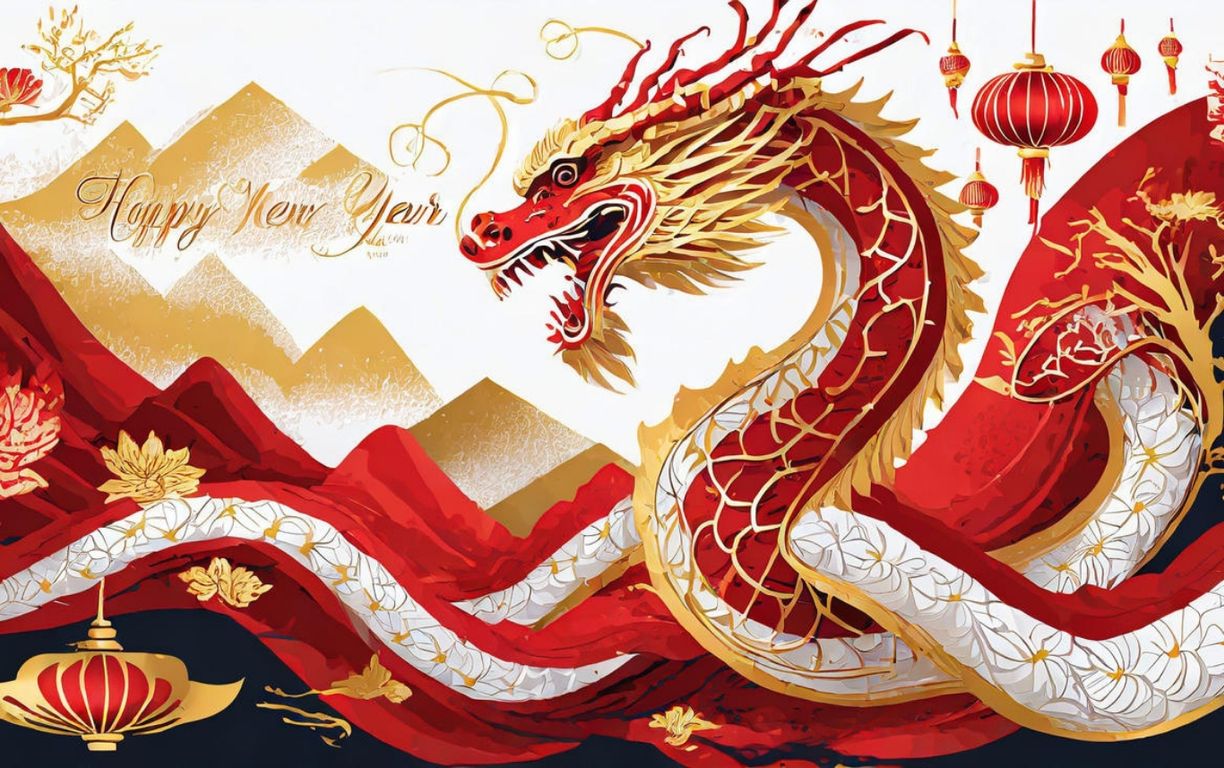Introduction to Chinese New Year 2025
Chinese New Year, or the Spring Festival, is a cornerstone of Chinese culture. In 2025, it will begin on February 17th, marking the start of the Year of the Wood Snake. This grand celebration is more than just a holiday; it’s a time for family, gratitude, and reflection, with a wealth of traditions passed down through generations. Chinese New Year’s rich cultural significance is woven with vibrant celebrations, making it one of the most eagerly awaited holidays of the year.
The Origins and History of Chinese New Year
The roots of Chinese New Year stretch back over 4,000 years. Its origins are shrouded in myth, with one of the most well-known legends explaining the origins of the holiday. It is said that the monster Nian would terrorize villages every New Year, so the villagers would make loud noises, light fireworks, and wear red clothing to scare Nian away. These actions are still practiced today to bring luck and ward off negative influences.
The Chinese Zodiac and Its Role in 2025
The Chinese zodiac is made up of 12 animals, and each year is associated with one of these animals. 2025 falls under the Wood Snake. People born in the Year of the Snake are considered intelligent, intuitive, and graceful. With the Wood element added to this, it signifies growth, creativity, and nurturing, making the Year of the Wood Snake a time for progress, learning, and personal development.
How Chinese New Year is Celebrated in 2025
Family Reunions and Special Meals
A hallmark of Chinese New Year is the reunion dinner held on New Year’s Eve. This is a time when families come together, often traveling great distances to enjoy a special meal. A variety of dishes are served, each with symbolic meanings. For instance, dumplings symbolize wealth, while fish represents abundance. Every dish is steeped in symbolism, meant to bring good fortune and prosperity in the coming year.
Fireworks and Firecrackers: A Tradition of Protection
The use of fireworks and firecrackers is another iconic part of the celebration. This custom dates back to the ancient belief that fireworks, with their loud sounds and bright flashes, could drive away evil spirits and ensure good luck. Although modern regulations may restrict fireworks in certain places, they remain an essential part of the celebration in many parts of the world.
Red Envelopes: Gifts of Luck and Prosperity
The tradition of hongbao, or red envelopes filled with money, is a cherished custom during Chinese New Year. These red envelopes are typically given to children, unmarried adults, and sometimes employees. The color red symbolizes good luck and protection from evil, and the money inside is a wish for prosperity in the year ahead.
Traditional Chinese New Year Foods in 2025
Dumplings: A Symbol of Wealth
Dumplings are one of the most popular foods during Chinese New Year. Their shape resembles ancient Chinese gold ingots, symbolizing wealth and prosperity. Many families take part in making dumplings together as part of the celebration, reinforcing the bonds of family and tradition.
Longevity Noodles: Wishes for Long Life
Longevity noodles, another staple of the New Year, are eaten to symbolize a long and healthy life. The key is to avoid cutting or breaking the noodles while eating them, as longer noodles are believed to signify a longer life.
Sweet Rice Balls: Symbolizing Family Unity
Tangyuan, sweet rice balls served in a bowl of warm soup, are a traditional dessert. These rice balls symbolize family unity and harmony, as their round shape signifies completeness and togetherness.
The Significance of Red Decorations
Symbolism of Luck and Prosperity
Red is the color of choice for Chinese New Year decorations. It is believed to ward off evil spirits and bring good luck. Homes and public spaces are adorned with red lanterns, banners, and other decorations featuring blessings of prosperity, happiness, and good fortune.
Paper Cuttings and Calligraphy
In addition to red decorations, paper cuttings and calligraphy are an important part of the festive atmosphere. These often feature messages of good luck and prosperity, with intricate designs showcasing the talent of local artisans. They can be found decorating homes, businesses, and public spaces.
Chinese New Year Around the World in 2025
Celebrations in Mainland China
In cities like Beijing, Shanghai, and Guangzhou, the celebrations are extravagant, with grand parades, traditional dances, and cultural performances. The dragon dance is particularly popular and is believed to bring good fortune, symbolizing strength and unity.
Chinese New Year Across the Globe
Chinese New Year is celebrated not only in China but across the world, especially in regions with large Chinese communities. In places like New York, London, and Sydney, local communities come together to celebrate with dragon and lion dances, food festivals, and vibrant parades, showing how Chinese culture has spread globally.
The Cultural and Spiritual Meaning of Chinese New Year 2025
A Time for Reflection and Renewal
Chinese New Year isn’t just a time to celebrate; it’s also a time to reflect on the past year and look ahead. The first day of the new year is often spent cleaning the home, symbolizing the removal of bad luck and making way for good fortune. People also wear new clothes, signifying a fresh start and a clean slate.
Spiritual Rituals and Ancestor Worship
Many people honor their ancestors during Chinese New Year by visiting their graves, offering prayers, and lighting incense. Ancestor worship plays a central role in the celebration, as it’s believed that the ancestors can bring blessings and protection to the family in the year to come.
Sustainability and Modern Changes in Chinese New Year 2025
Eco-Friendly Celebrations
As the world becomes more environmentally conscious, Chinese New Year celebrations are also evolving. In 2025, there may be a greater emphasis on sustainability, with eco-friendly decorations, digital red envelopes, and alternatives to traditional fireworks becoming more popular.
Technology and the Future of Chinese New Year
Advancements in technology have transformed how people celebrate Chinese New Year. Virtual family reunions, online shopping for traditional foods, and digital greetings have made it easier for people to celebrate, especially if they cannot be physically together. This technology ensures that the spirit of Chinese New Year is more accessible than ever before.
Conclusion: Honoring the Past, Celebrating the Present, and Embracing the Future
Chinese New Year 2025 offers an opportunity to honor tradition while embracing the future. Whether it’s through the reunion dinners, the colorful decorations, or the symbolic foods, this celebration is about looking forward to a prosperous and harmonious year. The Year of the Wood Snake is an invitation for growth, reflection, and new beginnings, and it will be marked by both time-honored customs and modern twists.
Frequently Asked Questions
- What is the significance of the Year of the Wood Snake?
- The Wood Snake year represents wisdom, grace, and growth. People born in this year are considered perceptive and creative.
- Why do people give red envelopes during Chinese New Year?
- Red envelopes, or hongbao, symbolize good fortune and blessings. The money inside is a wish for prosperity and happiness.
- What are some traditional Chinese New Year foods?
- Popular foods include dumplings, longevity noodles, and tangyuan (sweet rice balls), all of which carry symbolic meanings related to wealth, health, and family unity.
- How is Chinese New Year celebrated around the world?
- In places with large Chinese communities, such as San Francisco and Sydney, people celebrate with parades, traditional foods, and dragon dances, showcasing the global reach of the holiday.
- How is Chinese New Year changing in modern times?
- With increasing environmental awareness, many are adopting more eco-friendly practices. Technology has also allowed virtual celebrations, ensuring accessibility for all.










